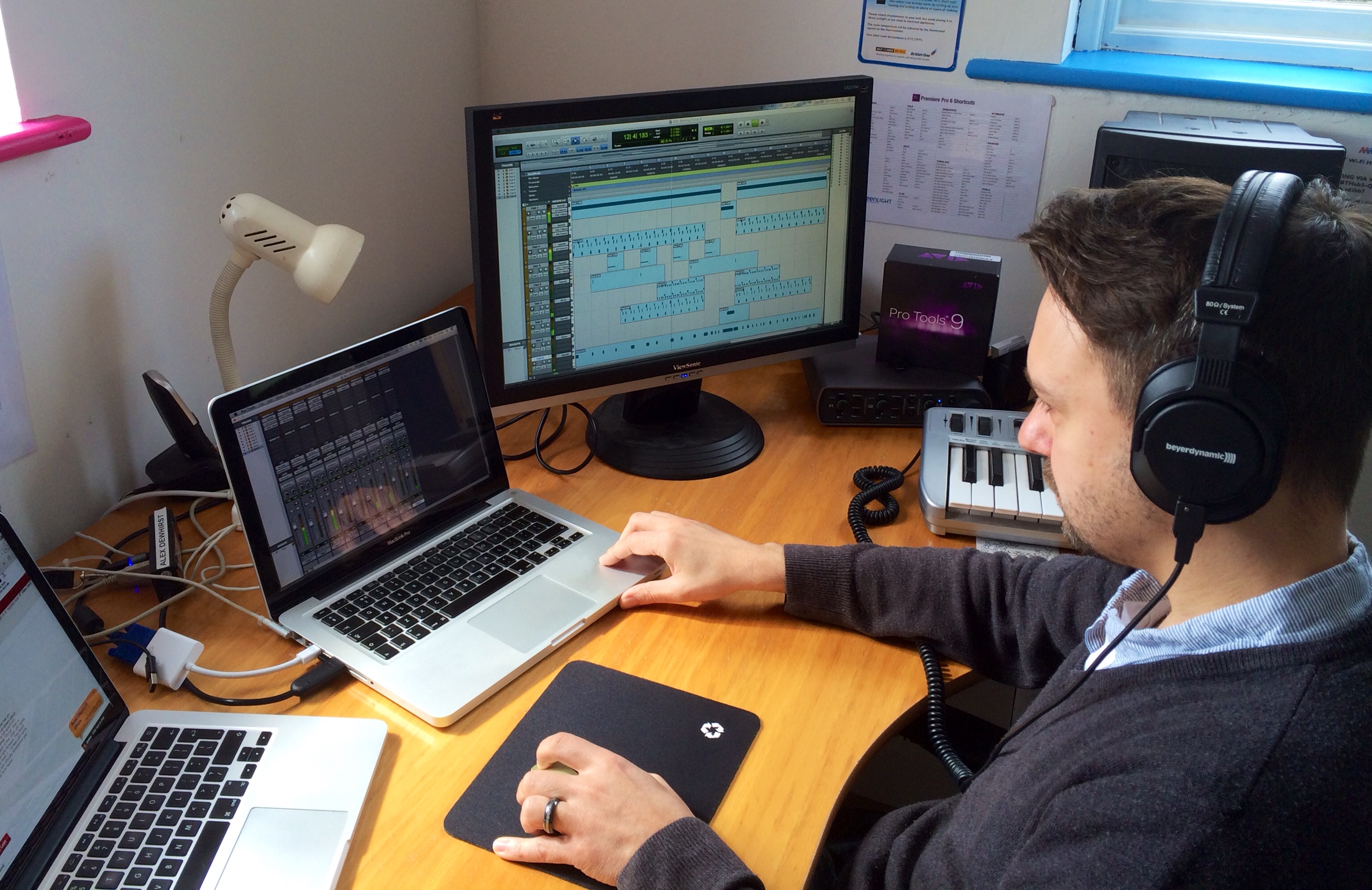Corporate Video Music Creation
So I personally, as a songwriter and composer, don’t really believe that there’s too much difference at all between writing a piece of music for yourself, with heartfelt lyrics that mean something to you and a melody and chord changes to die for, and a piece of corporate music that lies underneath a corporate video, often about something the writer of that music (or music as the case may be) cares very little about.
A slightly odd claim I suppose. Most other songwriters and composers that I know would probably say that there is a marked difference between music they’re writing out of love and passion for their craft, and a piece of music that will mostly be ignored as it sits under a voice over track talking about something not related to the music at all. I thoroughly disagree, which brings me on to my first point about corporate video music creation.
Love it
I believe you have to love it, or at the very least try to love it as you’re writing it. Just like someone who’s being interviewed and they clearly aren’t comfortable being on camera, which really shines through on the screen sometimes, I think music is similar in that you can almost hear the laziness in the writing of someone who has created a track that they don’t think is important enough to put more effort in to it.
The trick I always use is to ask myself “would I be happy playing this track to anyone, without having to explain that it’s a piece of backing track music for a video?” And the reason I do that is because I consider my standards to be fairly high, and I’m sure my friends and family who I play my own tracks to would be able to spot if I’d written something and put very little effort in to it! Also I think more importantly so would the client you’re writing it for!
Skill
Over the past seven years of working in video and creating tracks for all sorts of different types of videos (corporate and public sector mainly) I’ve noticed that there’s actually quite a skill in creating something that works for the video; something that isn’t too catchy, but is nice enough to listen to and remember, from the viewers point of view, and of course suits the video itself. Most of the tracks I write for myself I try and make the melodies as strong as possible, and spent years striving to achieve this. Yet with corporate video music you almost need to do the opposite. I certainly wouldn’t know how to advise doing this unfortunately, but I do know that I wasn’t very good at it early on because the tracks I was creating were basically too memorable and therefore became annoying on repeated watches of the videos. They were too repetitive and eventually I learned that balance between the different parts of music, to avoid them becoming irritating to listen to, is really important and very much part of the skill and craft of songwriting itself, just as much for corporate as it is for personal music.
Listen
The one biggest thing I would advise if you’re setting out to create a corporate video music track is to listen. Listen to the client first and foremost. Ask them to describe exactly what they’re after. The number of times a client has said to us “Just something upbeat will do fine” is crazy. We’ve then selected a track, one that’s been described back to us as “upbeat” time and time again by previous clients, but our current client will for some unknown reason then not feel that the track is right. I say unknown reason, that’s not quite true. The reason is obvious; music is subjective. One persons “upbeat” is another persons “meh…”. This is why asking clients to describe what they want in as much detail as possible is very important if you are creating a brand new track for them. I usually ask them to describe the kind of track they’d like in no less than five words, and give at least two examples of other tracks to listen to that are similar.
Get them to give you examples so that you can see exactly what they’re after. Then go and listen to those example tracks, even if they’re songs you already know (refreshing your ears with a recent listen sometimes reveals things you haven’t heard in the mix of a track before). Sometimes it may even help to ask about specific instrumentation, especially if the client you’re liaising with is a musical person as well. If the client has requested something with an electro-pop feel to it, and as a songwriter you really don’t feel that the video will work, then as a video creator you should be trying to do two things; explain to the client politely why it may be better to use a different style of music for the video, but also to try and incorporate an electro-pop feel in to what you’re writing anyway. After all, it’s the clients video not yours. Personally I’ve also always enjoyed the challenge of writing in a style I’m not used to, pushing myself a little bit each time to broaden my skill set and develop the craft of songwriting further. I realize that sounds a bit cheesy to say it like that, but with my business hat on I actually think that’s the best attitude to have. My own tracks are statistically less likely to bring me any revenue in comparison to my corporate music tracks, via the company, so it’s probably a good idea to be able to turn my hand to anything rather than be a one-trick-pony style composer!
Chicken and Egg
There’s an odd thing about writing a corporate video track. The music is often dictated by the cut of the visuals. That often gives the video its pace, and therefore it’s musical tempo. Let’s say the video also contains clips for example of children in Africa; as a songwriter you may want to try and incorporate some traditional African instruments so the video and music has a more homogenous feel to it, unconsciously or consciously. But, and it’s a big but, the problem comes in that a good visual edit is often guided by the music track itself. So, which do you do first, the visual cut or the music?
The approach we usually take is to discuss the music with the client to the point where we know what we need to create, then use a similar piece of music (in terms of tempo and feel) for the editor to cut the visuals together to. Then simply replace the music with the new track once it’s finished, and slightly adjust some of the cuts where necessary. If you’re going to use a similar approach, don’t forget to let the client know the track you’re using to show them the initial drafts of the video is just a guide for the editor and not the final piece of music! People become strangely attached to tracks once they’ve heard them a few times over…
That’s just an overview to our approach; mine specifically, to creating original music for videos. In the next blog I’ll go in to more detail about using Pro-Tools to create tracks, instrumentation, tempo and the general feel of the music. I’ll also describe exactly how I go about recording and mixing tracks.
Phil


